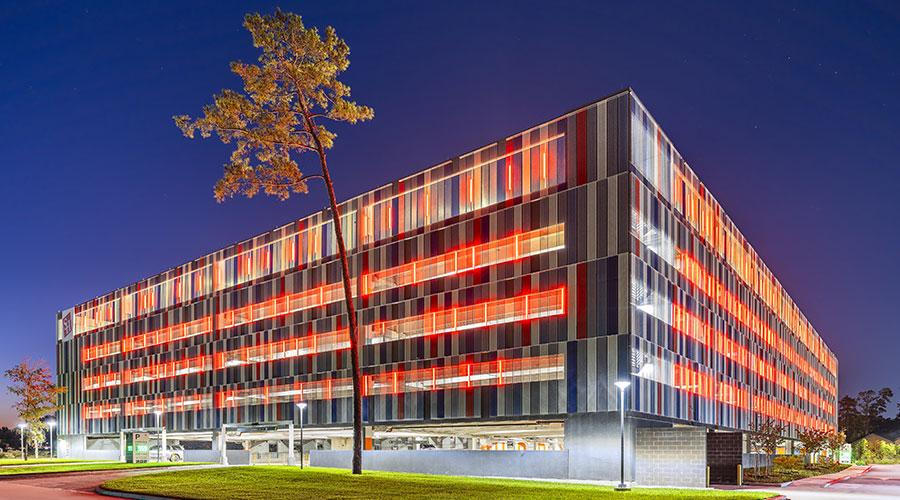Lighting Audits and Tax Incentives
No two facilities — and in some cases, no two areas within a single facility — have the same lighting needs. A lighting system strategy that works in one building's conference room might be a complete failure in another facility's similar space.
"You really do need to arrive at a solution based upon your facility's needs," says Maniccia.
That's where a lighting audit comes into play. An audit can help facility professionals assess the many options available to them and determine their lighting needs in different locations within the facility. An audit also will identify total lighting energy expenditures within a facility and help determine where facility managers can realize the most significant savings.
"A high-bay location vs. a conference room vs. a foyer vs. a large employee task environment require different energy-efficient lighting solutions," Strainic says. "They also can use different controllable lighting options. An audit allows facility professionals to tailor each location's lighting needs, and in turn, realize greater savings with lighting that is more beneficial to that application."
Lighting experts recommend, at minimum, designing new or major renovations based on the latest version of the ANSI/ASHRAE/IES 90.1 standard for building energy efficiency. The current version is 90.1-2007, but 90.1-2010 will be published this year and will provide even greater energy savings. Another option is the new ANSI/ASHRAE/USGBC/IES 189.1-2009, Standard for the Design of High-Performance Green Buildings, Except Low-Rise Residential Buildings.
"Facility professionals also must remember to comply with the state and local building energy codes, although, in most cases, compliance with the 90.1 or 189.1 standards will exceed the state and local codes," Anderson says.
Emerging federal regulations also will come into play. DOE recently announced new efficiency standards for fluorescent, incandescent and halogen lamps, with an effective starting date of July 14, 2012.
"The result will be that nearly two-thirds of the SKUs sold in the market today will be eliminated because of these changes," Strainic says, adding that these changes likely will prompt upgrades in some facilities.
As with any technology, expect energy-efficient lighting to continue to evolve as manufacturers develop new ways to help facility managers reduce energy consumption, save money, simplify maintenance and operations, and even improve occupant productivity.
"Keep watching," Ward says. "The electrical and lighting industries are going through a most exciting time as manufacturers continue to drive new technologies into this market. These technologies will give end users more control over their work environment and allow for both creative and functional lighting systems that optimize business operations and worker performance."
Simply put, the facilities industry needs to take a holistic approach with lighting system upgrades, from the luminaire to the controls.
"You need to look beyond the up-front costs and do modeling on the life-cycle cost and payback to calculate your long-term savings," Casanova says. "It might cost a little bit more in the up-front costs, but the payback is relatively quick and far exceeds the investment. And remember that lighting upgrades are not just financial decisions. Quality of light is important because improved quality leads to enhanced productivity and better safety."
Lighting Upgrades = Tax Savings
Upgrading to the latest lighting technologies not only reduces a facility's energy consumption and creates savings in utility and maintenance costs; making these changes also can cut taxes through a deduction offered by the Energy Policy Act (EPAct) of 2005.
"Now is an excellent time to make conversions because of the financial incentives," says Susan Anderson, manager of energy relations at Osram Sylvania.
The Energy Efficient Commercial Building Tax Deduction, backed by the National Electrical Manufacturers Association (NEMA), establishes a deduction for expenses incurred for energy-efficient building expenditures made by a building owner. The provision is effective for property placed in service between Jan. 1, 2006 and Dec. 31, 2013.
Improvements must beat ASHRAE/IESNA 90.1-2001 by 50 percent. The deduction is limited to up to $1.80 per square foot of the property, with allowances for partial deductions for improvements in interior lighting, HVAC, and building envelope systems. All three systems must qualify for a building owner to get the maximum deduction. If just one system, such as lighting, qualifies, then the deduction is up to $0.60 per square foot.
Lighting deductions are based on reductions in power density (watts per square foot), and the upgrade must involve capital expenditures that are depreciated. Changing only the lamps does not count, and exterior lighting is not included.
To learn more about the Energy Efficient Commercial Building Tax Deduction, visit www.efficientbuildings.org.
|
Related Topics:














